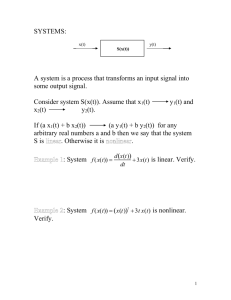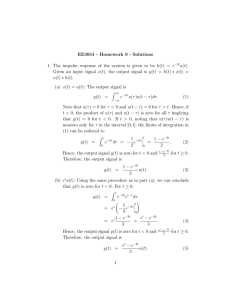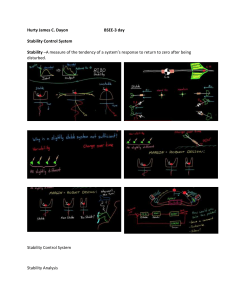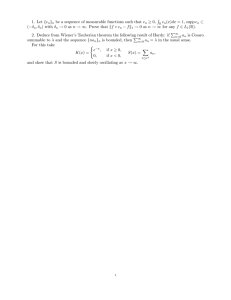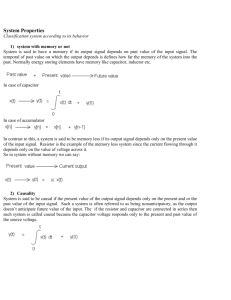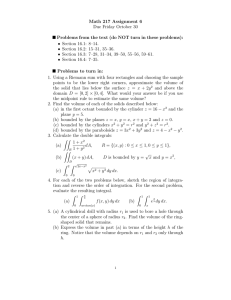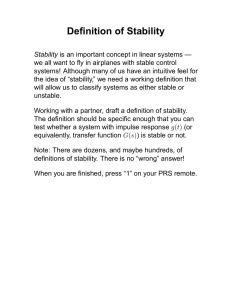Solution to ECE 315 Test #3 F04
advertisement
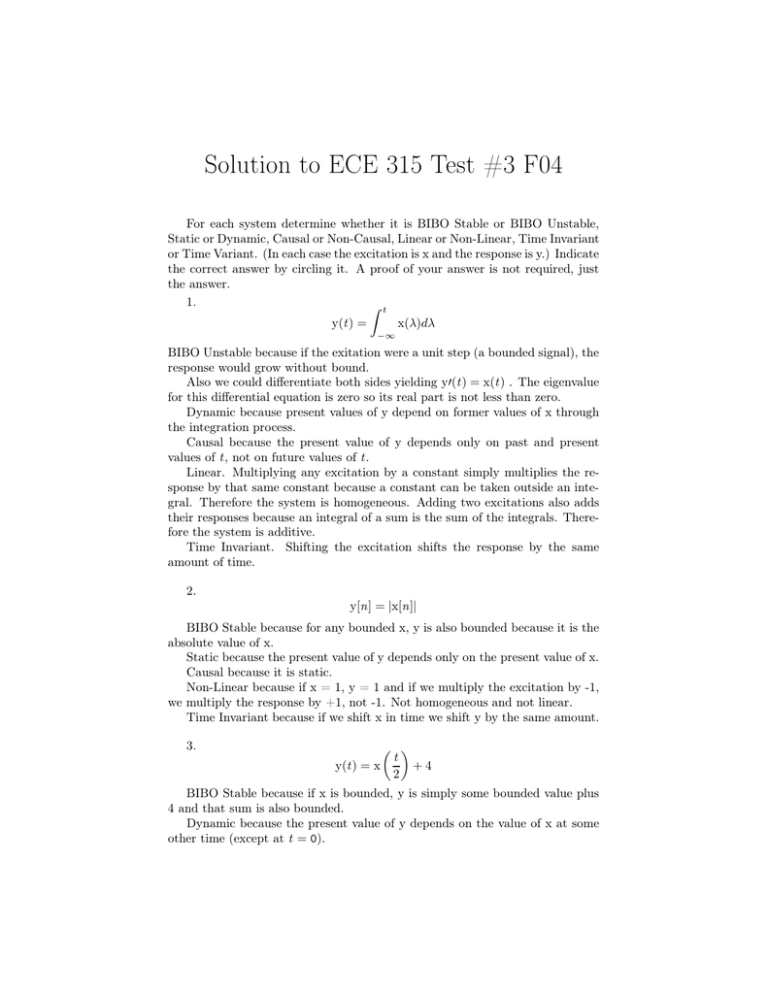
Solution to ECE 315 Test #3 F04 For each system determine whether it is BIBO Stable or BIBO Unstable, Static or Dynamic, Causal or Non-Causal, Linear or Non-Linear, Time Invariant or Time Variant. (In each case the excitation is x and the response is y.) Indicate the correct answer by circling it. A proof of your answer is not required, just the answer. 1. Z t x(λ)dλ y(t ) = −∞ BIBO Unstable because if the exitation were a unit step (a bounded signal), the response would grow without bound. Also we could differentiate both sides yielding y′(t ) = x(t ) . The eigenvalue for this differential equation is zero so its real part is not less than zero. Dynamic because present values of y depend on former values of x through the integration process. Causal because the present value of y depends only on past and present values of t , not on future values of t . Linear. Multiplying any excitation by a constant simply multiplies the response by that same constant because a constant can be taken outside an integral. Therefore the system is homogeneous. Adding two excitations also adds their responses because an integral of a sum is the sum of the integrals. Therefore the system is additive. Time Invariant. Shifting the excitation shifts the response by the same amount of time. 2. y[n] = |x[n]| BIBO Stable because for any bounded x, y is also bounded because it is the absolute value of x. Static because the present value of y depends only on the present value of x. Causal because it is static. Non-Linear because if x = 1, y = 1 and if we multiply the excitation by -1, we multiply the response by +1, not -1. Not homogeneous and not linear. Time Invariant because if we shift x in time we shift y by the same amount. 3. t y(t ) = x +4 2 BIBO Stable because if x is bounded, y is simply some bounded value plus 4 and that sum is also bounded. Dynamic because the present value of y depends on the value of x at some other time (except at t = 0). Non-Causal because for any negative time, t , t /2 is in the future. Non-Linear because if x( 2t ) = 1, y(t ) = 5 and we double x to 2, y does not double. Not homogeneous and not linear. Time Variant. This is probably the trickiest proof. Let x1 (t ) = g(t ). Theny1 (t ) = g( 2t ) + 4. Let x2 (t ) = g(t − t0 ). Then y2 (t ) = g( 2t − t0 ) + 4. 0 y1 (t − t0 ) = g( t−t 2 ) + 4 6= y2 (t ). 4. 2y′ (t ) − y(t ) = x(t ) BIBO Unstable because the eigenvalue is 1/2 whose real part is greater than zero. (If the sign of the second term on the left is changed, the system becomes stable because the eigenvalue becomes -1/2.) Dynamic because this system can be represented by a block diagram with an integrator in it and an integrator has memory. Looking at it another way, in order to have the derivative of y in the system the system must have some knowledge of the past history of y. Imagine that at some instant of time you know what y(t ) is. What is y′(t )? It is impossible to say without knowing how the y function is moving at that point and that requires memory. Causal because the present value of y depends only on present and past values of x. Linear and Time Invariant by the usual proof methods for this very common type of system.
